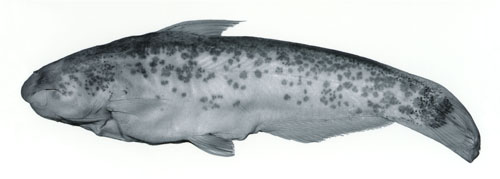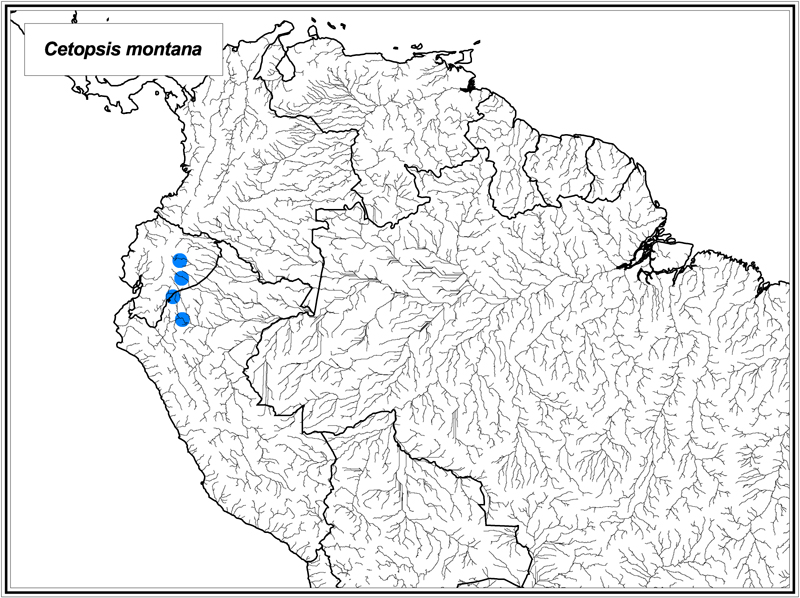
Reproduced from Vari, Ferraris and de Pinna (2005).
Cetopsis montana Vari, Ferraris & de Pinna, 2005
Identification: Cetopsis montana can be distinguished from all of its congeners by the combination of the presence of an eye, the conical teeth on the vomer and dentary, the rounded posterior nares which is distinctly separated from the contralateral nares by a distance greater than the width of the posterior nares, the absence of a dark humeral spot, the presence of a posteriorly-rounded, variably-developed, bilobed patch of dark pigmentation at the base of the caudal fin, the absence of a spot of dark pigmentation on the base of the dorsal fin and absence of prominent dark pigmentation along the membrane behind the first ray of the dorsal fin, the presence of approximately eye-size, dark spots on the lateral surface of the body, the absence of finely scattered, dark pigmentation across the lateral and anterior surfaces of the snout and the lateral surface of the body, and the possession of 19 to 21 branched anal-fin rays. Maximum size: 119 mm SL.
Range: Cetopsis montana occurs in the western portions of the Amazon basin in northeastern Peru and southeastern Ecuador.
Information from Vari, R. P., C. J. Ferraris Jr. & M. C. C. de Pinna. 2005. The Neotropical whale catfishes (Siluriformes: Cetopsidae: Cetopsinae), a revisionary study. Neotropical Ichthyology 3:127-238.
